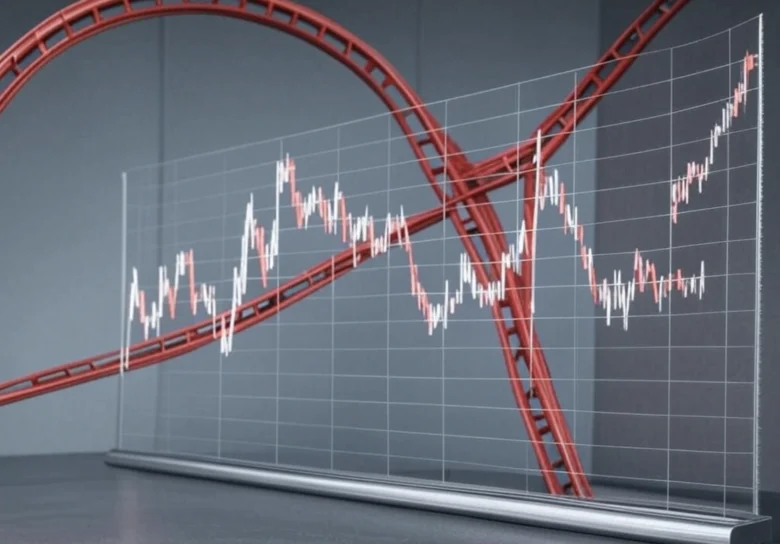
Exploring how historical shifts in the Dollar Index reflect inflation control, economic slowdowns, and global market reactions—from 1980 to the post-COVID era.
The Dollar Index (DXY) can usually be a pulse check indicator of global economic confidence. When we see the index decline, it isn’t just about the weak dollar; it often conceals the message of looming recessions and economic slowdowns. This article here revisits historical episodes—1980, 1997, 2008, and the periods after 2011 and post-COVID—to explore how shifts in the Dollar Index not only correlate with inflation dynamics but also sometimes point to a probable recessionary outlook.
Understanding the Dollar Index and its Broader Implications
Defining the Dollar Index
The DXY measures the USD’s performance against a basket of six key currencies(Euro, Yen, GBP, CAD, SEK, CHF). With historical highs of around 120 in the mid-1980s and a subsequent lower range as market conditions changed, recent moves—from approximately 103.5 to 101.0 (a short-term 2.4% drop)—can remind us that even a visibly smaller shift can signal big changes. Such declines are now being interpreted not only through the lens of inflation but also as early warning signs of reduced economic momentum.
Nodal Points & Recessionary Outlook: Historical Lessons
1980 – The Tightrope of Stagflation and Policy Impact
Historical Context:
The late 1970s and early 1980s were marked by persistently high inflation and stagnant economic growth, a rare combination known as stagflation. Key drivers included oil price shocks, loose monetary policy, and rising wage pressures.
To combat this, the Federal Reserve, under Chair Paul Volcker, adopted an aggressive strategy—raising interest rates sharply, with the federal funds rate peaking near 20%. These hikes attracted global capital inflows, driving the Dollar Index (DXY) to all-time highs in the early 1980s.
Recessionary Signal:
This monetary tightening, while successful in containing inflation, led to a sharp slowdown in economic activity. The U.S. entered a deep recession in 1981–82, with unemployment surpassing 10%.
As the economy weakened, the Fed began to ease its stance. The subsequent decline in the Dollar Index reflected both this policy shift and broader concerns about growth.
In retrospect, the peak and fall in the DXY served as a macro signal—marking a shift from inflation risk to recession risk, as markets priced in the economic cost of disinflation.
1997 – The Asian Financial Crisis and Global Ripples
Historical Context:
In July 1997, Thailand’s decision to float the baht triggered a rapid devaluation, exposing vulnerabilities in East and Southeast Asian economies. Factors such as excessive foreign-denominated debt, fixed exchange rates, and speculative investments led to a regional crisis. Currencies like the Indonesian rupiah and South Korean won depreciated sharply, and capital inflows to affected countries dropped by over $100 billion within a year.
Recessionary Signal:
While the U.S. economy remained relatively insulated, the crisis led to reduced inflationary pressures due to cheaper imports and lower commodity prices. The Dollar Index (DXY) strengthened as investors sought safe-haven assets, reflecting a shift in global capital flows. The situation highlighted how regional financial instability could influence global economic dynamics.
2008 – The Great Recession and the Paradox of Safe-Haven Dollars
Historical Context:
The collapse of the U.S. housing market and the ensuing credit crisis led to a severe global recession. Major financial institutions failed, unemployment soared, and global markets plummeted. The Federal Reserve responded with aggressive monetary easing, including lowering interest rates and implementing quantitative easing (QE) programs.
Recessionary Signal:
Despite the Fed’s easing policies, the Dollar Index appreciated during the crisis. This counterintuitive movement was due to the dollar’s status as a global reserve currency, prompting investors worldwide to seek safety in U.S. assets. The strengthening dollar, amidst domestic economic weakness, underscored its role as a safe-haven currency during global financial distress.
2011 – Post-QE Era: Dollar Weakness and Global Rebalancing
Historical Context:
Following the initial QE measures, the U.S. economy showed signs of recovery, but concerns about fiscal sustainability and global imbalances persisted. The Federal Reserve’s continued asset purchases aimed to support growth and employment.
Recessionary Signal:
Extended periods of low interest rates and asset purchases led to a depreciation of the dollar, as investors sought higher yields elsewhere. This dollar weakness contributed to global rebalancing efforts, aiding U.S. exports but also raising concerns about potential inflationary pressures and asset bubbles in emerging markets.
2020–2022 – COVID-19 Pandemic: Dollar Volatility and Economic Uncertainty
Historical Context:
The COVID-19 pandemic caused unprecedented global economic disruption. Lockdowns, supply chain disruptions, and shifts in consumer behaviour led to sharp contractions in GDP worldwide. Central banks, including the Federal Reserve, responded with emergency rate cuts and renewed QE programs.
Recessionary Signal:
Initially, the dollar strengthened due to a flight to safety. However, as the Fed’s interventions expanded the money supply, the dollar began to weaken. This volatility in the Dollar Index reflected the balance between safe-haven demand and concerns over monetary expansion, highlighting the complex interplay between currency values and economic recovery efforts.
Historical Trends and What They Reveal
Trends:
- 1980–1982:
The DXY rose above 120 during this time, driven by U.S. interest rates climbing over 18% under Fed Chair Paul Volcker. But as inflation started to cool and the economy slowed down, both the Dollar Index and interest rates dropped—showing how tough monetary policies aimed at fighting inflation can often lead to a recession.
- 1997:
In the lead-up to and during the Asian Financial Crisis, the DXY fluctuated between 90 and 100. The crisis led to 5–7% currency depreciation in several emerging markets, underscoring how even relatively smaller shifts in the Dollar Index can amplify global financial instability and contribute to growth shocks in interconnected economies.
- 2008:
During the 2008 global financial crisis, the Dollar Index jumped from about 72 to 88—a 10–15% rise—as global investors sought the safety of the U.S. dollar. However, this spike was short-lived. As the recession deepened, with factories shutting down and job losses mounting, the dollar’s momentum faded. This shift reflected how initial market reactions often contrast with the underlying economic reality.
- Post-2011 and post-COVID (2020–2022):
After 2011, the Dollar Index fluctuated mostly between 90 and 100. During this time, a series of small 2–3% declines often lined up with slower GDP growth and weaker industrial output, signalling a shift in the global economy from inflation control toward concerns over stagnation and demand slowdown.
In the years following the COVID-19 pandemic, the DXY climbed sharply above 110 at its peak, driven by aggressive Fed rate hikes. But whenever the index slipped by even 2–4%, it often corresponded with softening business sentiment and concerns around growth sustainability—marking a possible transition from inflation-driven policy to recession risk management.
Economic Mechanisms
Two key macroeconomic dynamics tend to accompany a weakening Dollar Index:
- Investor Sentiment and Capital Flows: A declining dollar may reflect reduced investor confidence in U.S. macroeconomic stability, leading to capital outflows. As returns on U.S. assets diminish, global investors may redirect capital toward higher-yielding or more stable alternatives, further pressuring the dollar.
- Domestic Economic Rebalancing: A weaker dollar can make imports more expensive and exports more competitive. While this may help reduce trade deficits, it can also lead to higher input costs for businesses and consumers, potentially dampening aggregate demand and pushing the economy toward contraction.
The Big Picture: Inflation vs Recession
The broader story of the Dollar Index (DXY) is not just about the U.S.—it’s about how global economies shift gears. When the dollar strengthens, it’s often during times of rising inflation and tighter monetary policy. But history shows us that when the DXY starts to fall—especially after a strong run—it often signals that the economy is cooling down and that a recession may follow.
Key Takeaways:
- 1980s: High inflation led the Federal Reserve to raise interest rates aggressively, pushing the dollar to record highs. However, this was followed by a deep recession as economic activity contracted.
- 1997: The Asian financial crisis triggered capital inflows into the U.S., strengthening the dollar temporarily. Yet, the turmoil eventually led to a broader global slowdown.
- 2008: During the financial crisis, the dollar surged as a safe-haven asset, but the real economy was already slipping into the Great Recession.
- Post-2011 & Post-COVID: Even modest declines in the Dollar Index coincided with slowing GDP growth and weaker industrial activity, both in the U.S. and emerging markets—signaling caution in the economic outlook.
So while inflation grabs headlines, it’s often the falling Dollar Index that works a leading indicator for the next market move—from an overheated economy to one that’s slowing down. This nodal point often marks the beginning of a recessionary cycle.
India’s Comparative Story
For India, the impact of a falling Dollar Index plays out a bit differently. Unlike the U.S., where a weakening dollar may signal an economic slowdown, India can benefit in the short term:
- Stronger Rupee: As the dollar weakens, the Indian Rupee strengthens. This makes imports like oil and technology cheaper, helping lower inflation.
- Lower Input Costs: Cheaper imports help reduce input costs for Indian industries, improving margins and competitiveness.
- Boost in Consumption: Reduced inflation often increases disposable income, potentially fueling domestic demand and growth.
But there’s a trade-off. India’s IT and export sectors earn heavily in dollars. So, a weaker dollar can hurt export earnings, potentially slowing down growth in sectors like software services, pharma, and manufacturing. In short, while a falling dollar can be recessionary for the U.S., for India it can act as a short-term inflation relief—but may dent export-driven revenues. The net effect depends on the export-import mix and how global demand shapes up.
The Dollar Index is more than a currency tracker—it reflects broader shifts in global economic conditions. Historically, its declines have often followed periods of tight monetary policy and high inflation, signalling a pivot toward slower growth or even recession. In the U.S., a falling DXY has aligned with weakening demand and lower investor confidence. In contrast, for India, such a fall can offer short-term relief from inflation through a stronger rupee and lower import costs, though it may also reduce export earnings. Overall, movements in the Dollar Index act as early signals of economic turning points. Keeping an eye on it helps investors and policymakers better prepare for changes in inflation, growth, and global financial trends.






